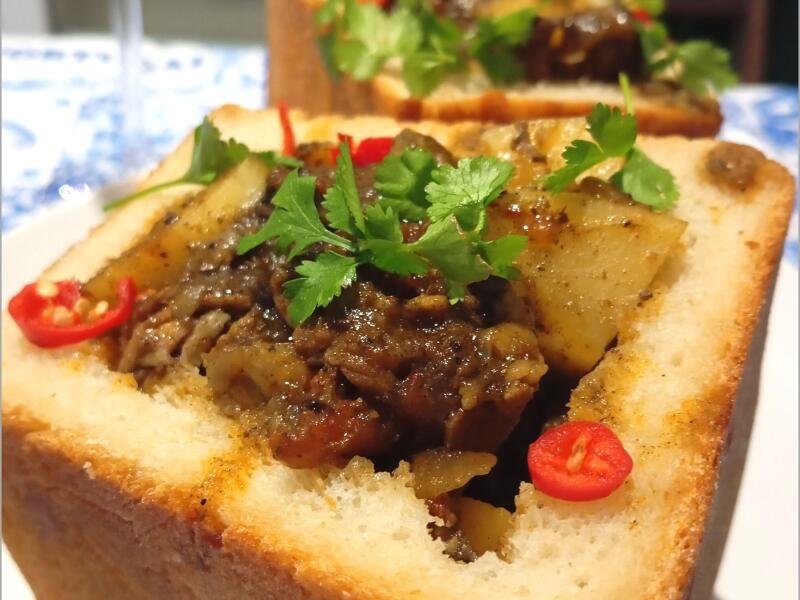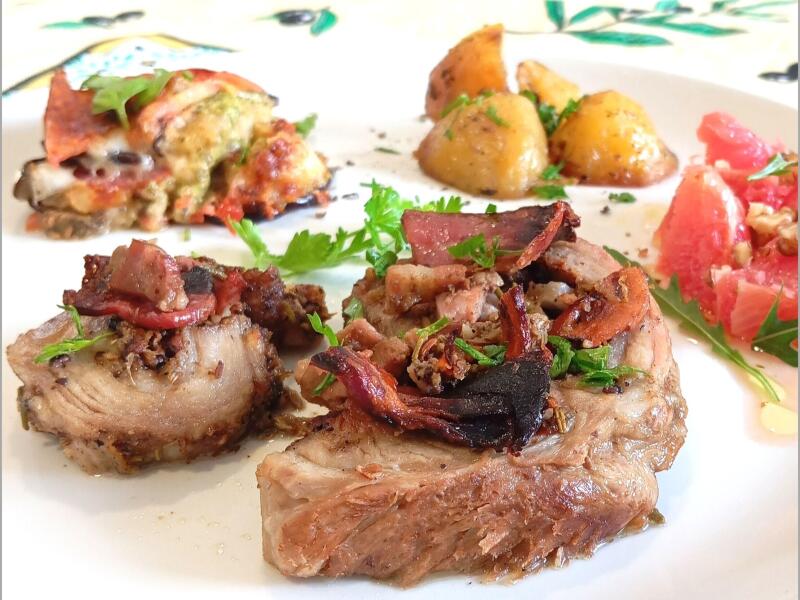Balancing between tradition and innovation, this dish proved to be truly exquisite. Grilled sheep tails create a flavorful ragù in a homemade pasta and then topped with a creamy béchamel and Parmesan cheese.
This cannelloni offers a blend of tender meat’s flavors with the comfort of pasta. It starts with succulent sheep tails, grilled and transformed into a flavorful ragù. This ragù, filled with aromatic herbs and savory ingredients, becomes the heart of the cannelloni.
Thinly rolled pasta wraps around this flavorful filling, forming elegant “rolls” nestled in a baking dish. A velvety béchamel sauce covers the pasta, adding a creamy touch to every bite. Grated Parmesan cheese provides a savory finish.
Baked to a golden brown, the cannelloni presents a variety of textures and tastes. Each forkful delivers the harmonious blend of tender meat, delicate pasta, and creamy sauce. This dish invites you to relish the tradition and artistry of Italian cuisine, making it a delightful option for any occasion.
This dish is essentially composed of three distinct components: the meat filling (or ragù), the pasta, and the béchamel sauce. I used this recipe as inspiration, but deviated quite a bit.
The meat filling
You will need the following ingredients for the filling:
- 1kg meaty sheep tails
- 1 medium onion, diced
- 1 celery stalk with leaves, diced
- 1 medium carrot, grated
- 4 cloves garlic, minced
- 1 jalapeño chili, chopped with seeds (optional)
- 250ml dry red wine
- 1 can diced tomatoes
- 50g tomato paste
- 150ml milk
- 1 Tbsp black peppercorns, roasted and crushed
- 1 Tbsp paprika
- 3 bay leaves
- 3 thyme sprigs
- 1 Tbsp kosher salt
- Oil
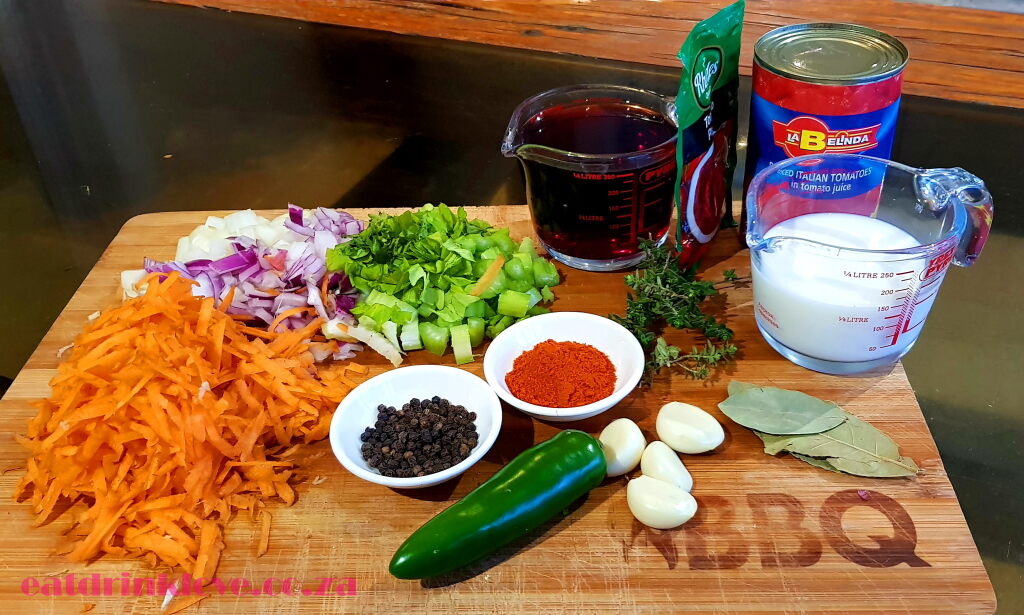
The filling constitutes a ragù made from sheep tails. Begin by rubbing the sheep tails with oil and seasoning them with black pepper and salt.

Grill the sheep tails on an open grill until they achieve a well-charred appearance.

Heat a sturdy pot (equipped with a lid) over medium heat and add a dash of oil. Add the carrots, onions and celery, and sauté for approximately 5 minutes.

Add the meat, along with bay leaves, thyme, garlic, chili, canned tomatoes, tomato paste, and paprika. Mix well.

Pour in the red wine, give it a good stir, cover the pot, and allow the mixture to simmer until the meat effortlessly detaches from the bones. Stir periodically during this process. This can take anything from 2 to 4 hours, depending on the tails and the heat. Add a little bit of water if necessary.
Using a slotted spoon, carefully remove the meat and set it aside to cool slightly. Discard the thyme and bay leaves from the pot.
Delicately separate the meat from the bones and discard the bones. Return the meat to the pot, stir in the milk, and set the mixture aside. The filling should possess a saucy consistency without being overly runny.

The pasta
I rely on a tried-and-true recipe that you can find here, but I’m listing the ingredients anyway:
- 4 eggs
- 320g 00 flour (Zero Zero flour – an Italian milled flour used for pasta)
- 80g semolina flour
If you don’t have semolina flour on hand, you can replace it with more 00 flour. The 00 flour is crucial as it creates an exceptional quality pasta.
Thoroughly combine all the ingredients to form a firm yet elastic dough. Wrap the dough with cling wrap and let it rest for a minimum of 1 hour.
Divide the dough into four equal-sized portions and roll it out using either a rolling pin or a manual pasta machine. Ensure that the dough is rolled out as thinly as possible; otherwise, the entire dish might turn overly doughy.
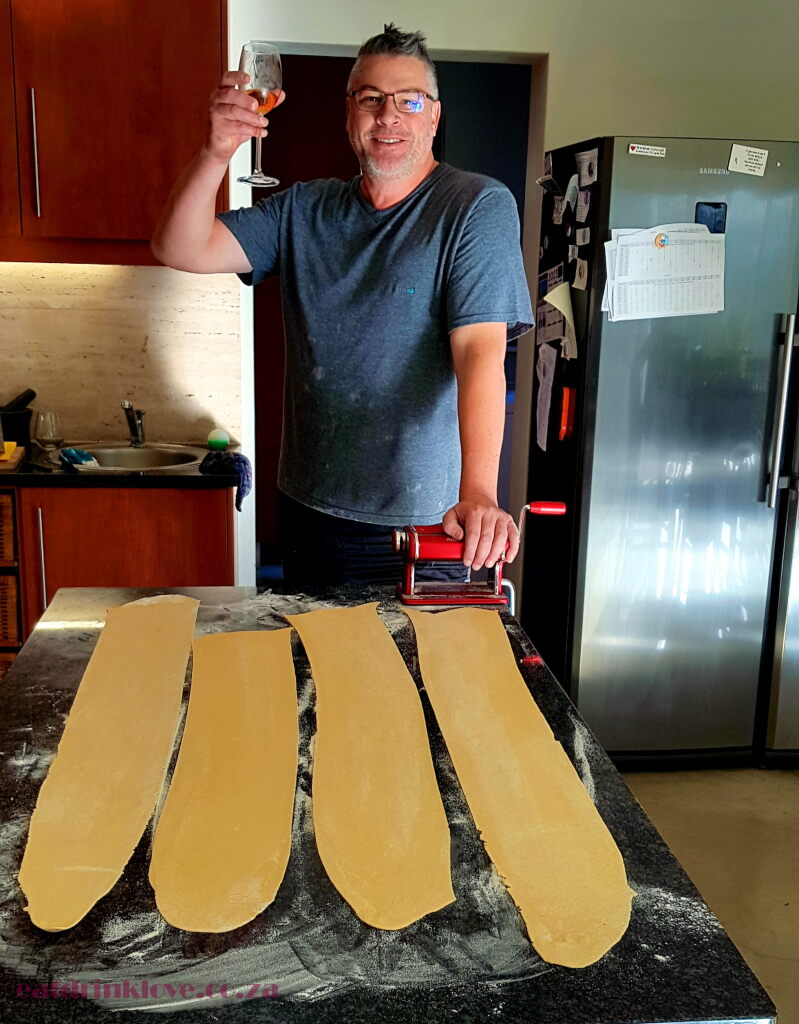
The béchamel sauce
I used the following ingredients for the béchamel sauce:
- 50g of butter
- 50g of flour
- 2 bay leaves
- 750ml of whole milk, warmed
- 1 tsp nutmeg, freshly grated
- 1 tsp white wine vinegar
- ¼ tsp freshly ground black pepper
- ½ tsp salt
Begin by melting the butter in a saucepan.
Add the flour to the melted butter and cook for a few minutes.
Gradually whisk in the hot milk to produce a smooth mixture.
Add the bay leaves and continue cooking the mixture until it thickens and transforms into a sauce.
Blend in the nutmeg, vinegar, salt, and pepper.
Taste and adjust the salt as needed, then remove the saucepan from the heat.

Bring it together
The only remaining ingredients required are approximately 20g of grated Parmesan cheese and a beaten egg.
Begin by preheating the oven to 200 degrees Celsius.
Slice the pasta into suitable lengths to match the size of an oven dish.
Place a portion of the filling along the long edge of the pasta sheet and carefully roll it up. Just before the two ends of the pasta meet, brush it with a bit of the beaten egg. Using a piping bag to apply the filling onto the pasta makes the process notably smoother.
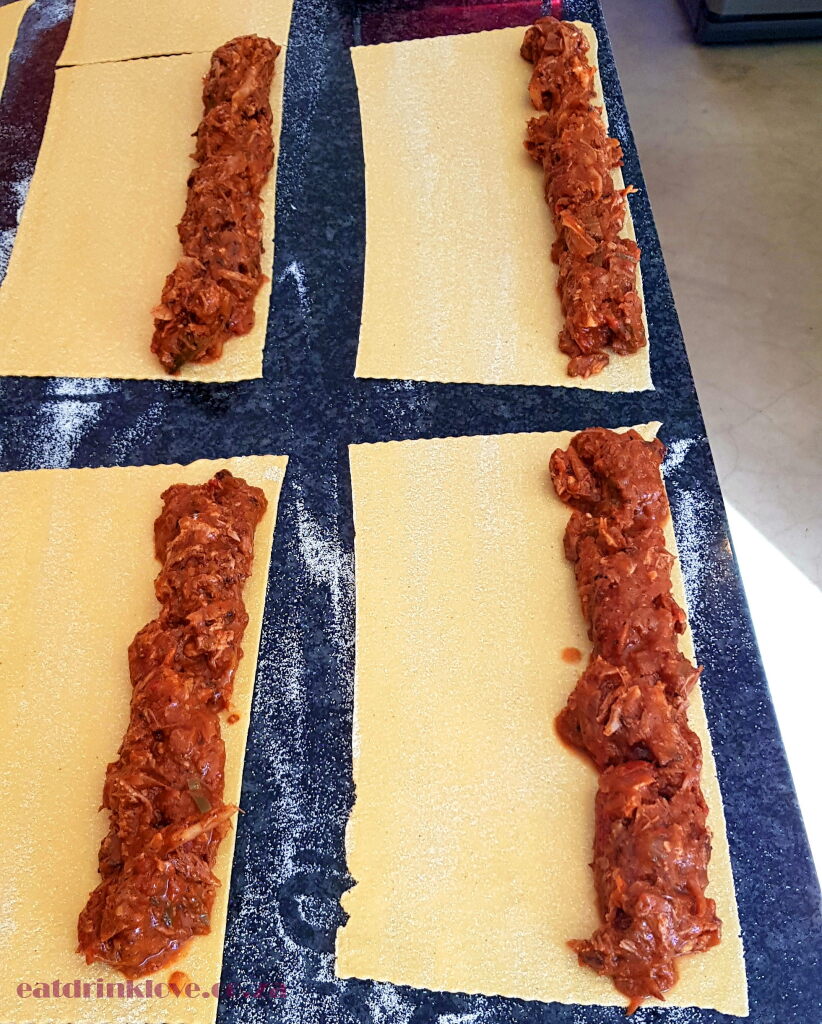
Arrange the cannelloni “rolls” side by side in the oven dish, ensuring there’s a small gap between each one.
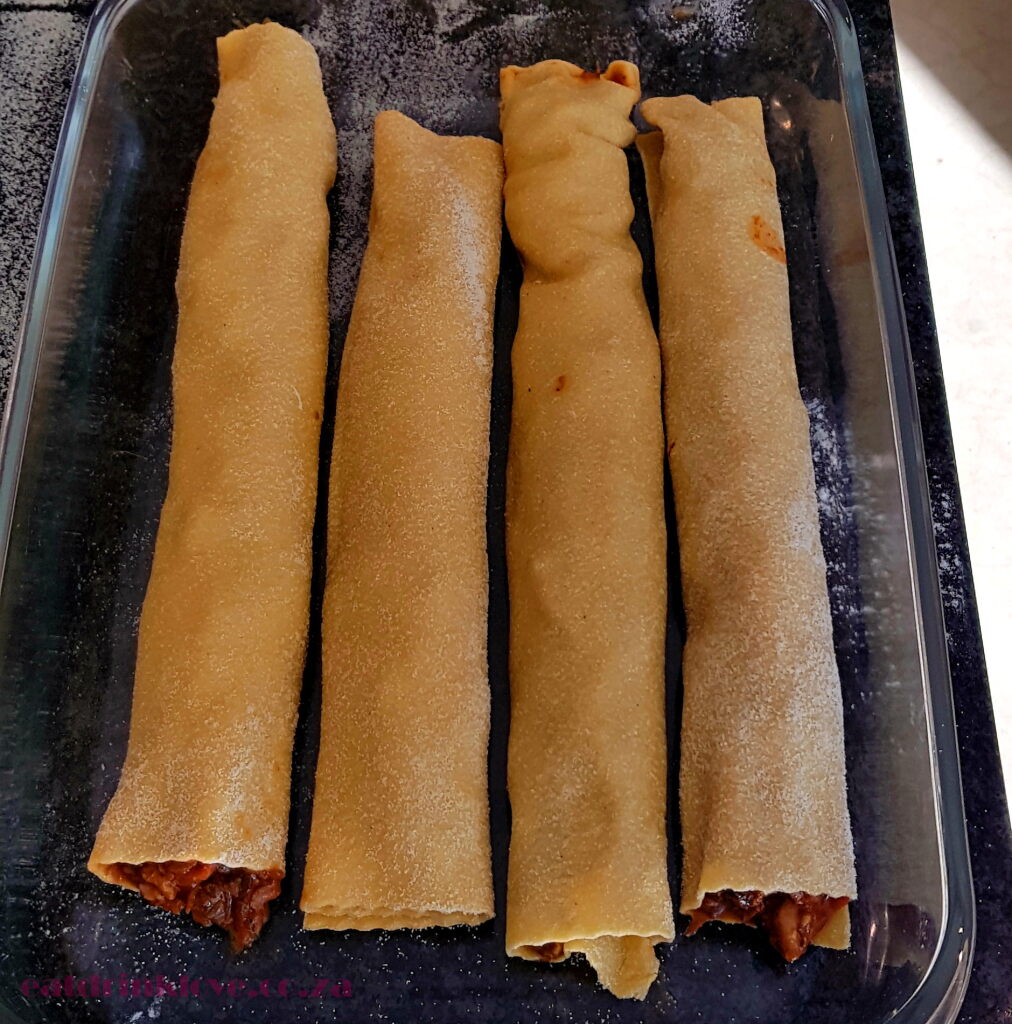
Ladle the béchamel sauce onto the pasta and then generously sprinkle the Parmesan cheese on top.

Place the dish in the oven and bake for approximately 45 minutes, or until it achieves a golden brown hue.
Serve the dish while it’s piping hot, alongside your preferred green salad.

The wine
We enjoyed this dish with a beautiful 2020 Lyngrove Platinum Cabernet Sauvignon.
Here are the tasting notes:

